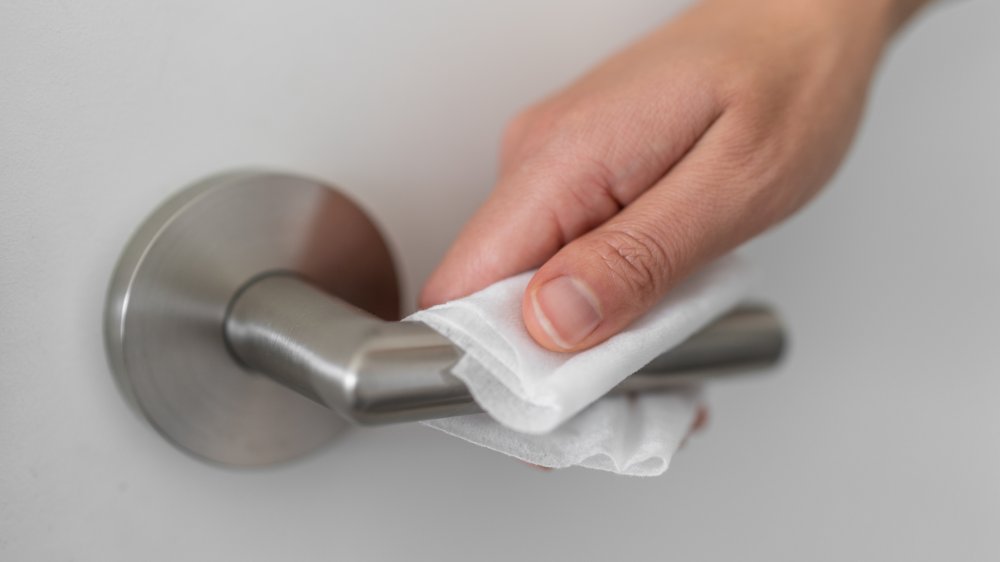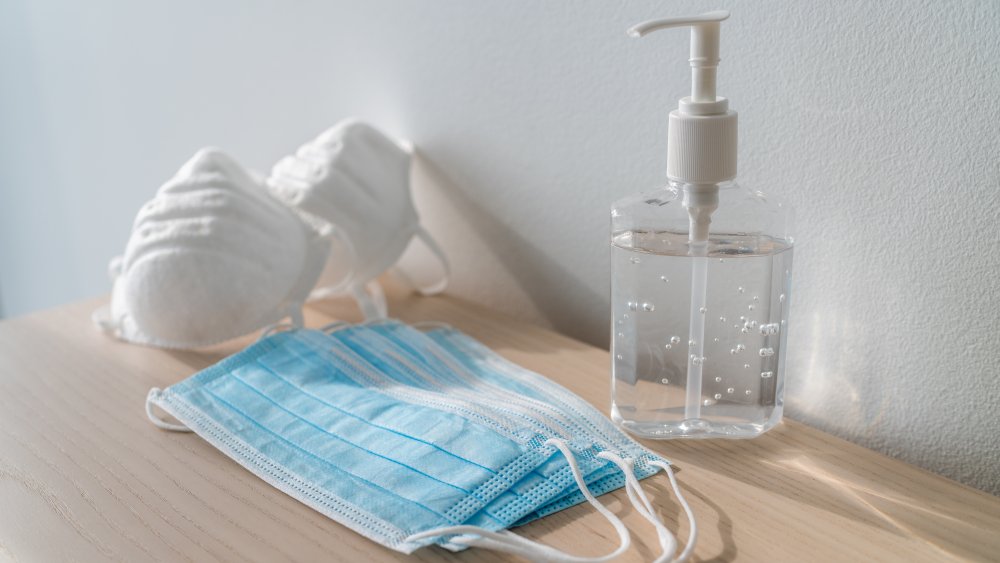The CDC Just Updated Its Stance On How Coronavirus Spreads
When the coronavirus first began spreading across Europe and the Americas from Asia, there were initial warnings from both the CDC and the World Health Organization (WHO) about just how highly infectious COVID-19 was. The WHO released a circular in early March which warned that when the droplets of an infected person falls on surfaces such as desks, or other objects, that surface could transmit the disease.
"People could catch COVID-19 by touching contaminated surfaces or objects – and then touching their eyes, nose or mouth," the WHO warned, adding, "If they are standing within one meter of a person with COVID-19 they can catch it by breathing in droplets coughed out or exhaled by them." While the WHO wasn't wrong about the potency of the virus and how it spread from person to person, new findings from the CDC show that touching an infected surface may not be as risky as experts previously thought.
The new finding shouldn't change our behaviors
"COVID-19 is a new disease and we are still learning about how it spreads," the CDC says. While it is possible to get sick by touching a surface with virus on it, and then touching your eyes, nose, or mouth, the CDC says it's not the main way the virus spreads.
The change in the CDC's guidelines doesn't mean we can stop washing our hands, disinfecting surfaces, or social distancing. What the findings do emphasize is how critical it is to wear face masks, since some people who have COVID-19 may be asymptomatic. And, a study recently found the virus can remain in the air for 3 hours.
Infectious diseases expert at the Vanderbilt University of School of Medicine William Schaffner explained to Fox News: "The virus that causes COVID-19 is thought to spread mainly through close contact from person-to-person (within about 6 feet). Person-to-person contact is a highway. Touching infected surfaces are little paths, but they don't carry the big viral traffic."
The new finding sheds more light on what does and doesn't increase risk
But with states pushing to reopen to save their economies, this news will come as a relief for many of us who are aching for life to return to normal — or at least as normal as it can be during a pandemic.
"Many people were concerned that by simply touching an object they may get coronavirus and that's simply not the case. Even when a virus may stay on a surface, it doesn't mean that it's actually infectious," John Whyte, the chief medical officer for WebMD told Fox News in an email. "I think this new guideline helps people understand more about what does and doesn't increase risk." Whyte continued, "I think this new guideline helps people understand more about what does and doesn't increase risk. It doesn't mean we stop washing hands and disinfecting surfaces. But it does allow us to be practical and realistic as we try to return to a sense of normalcy."


